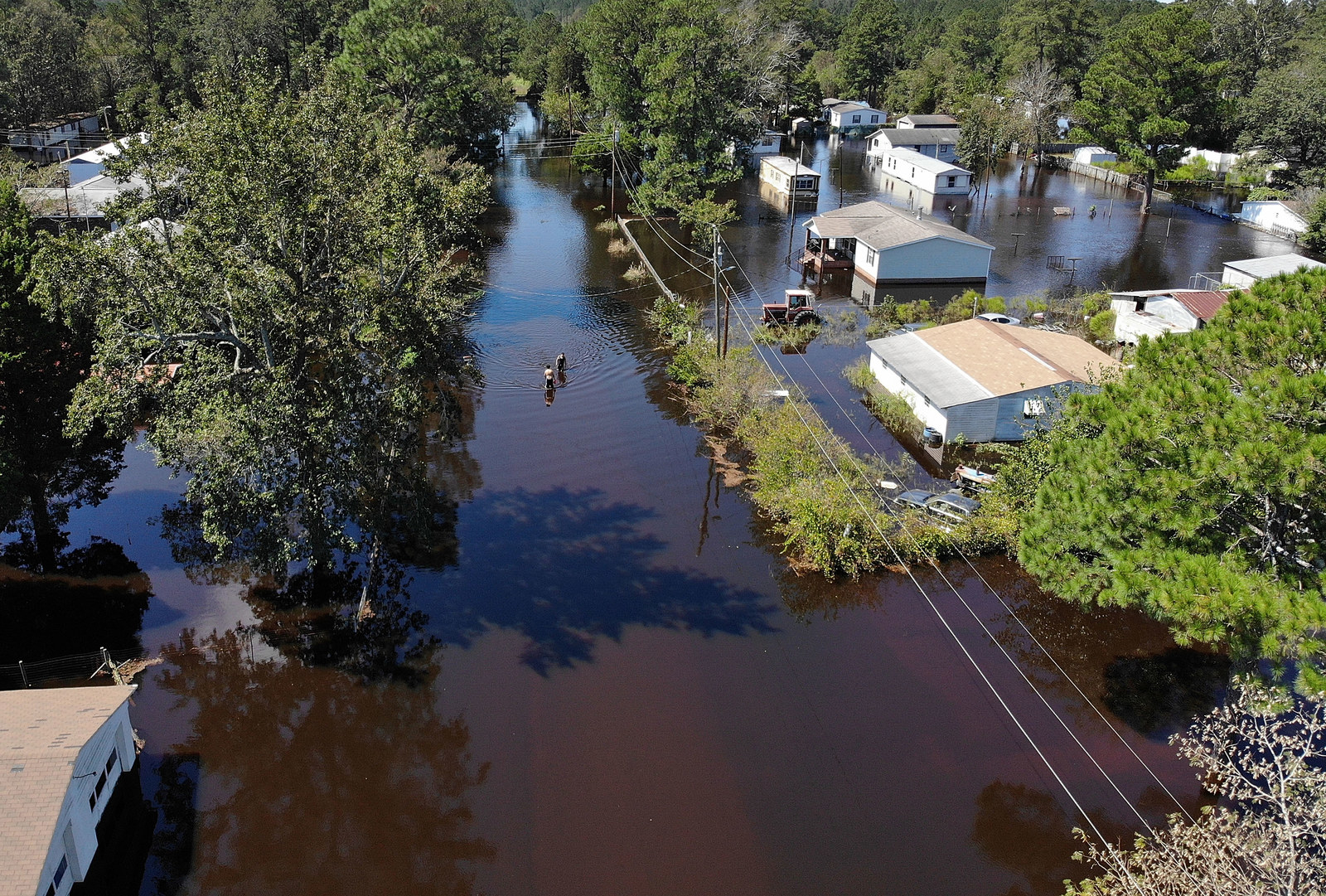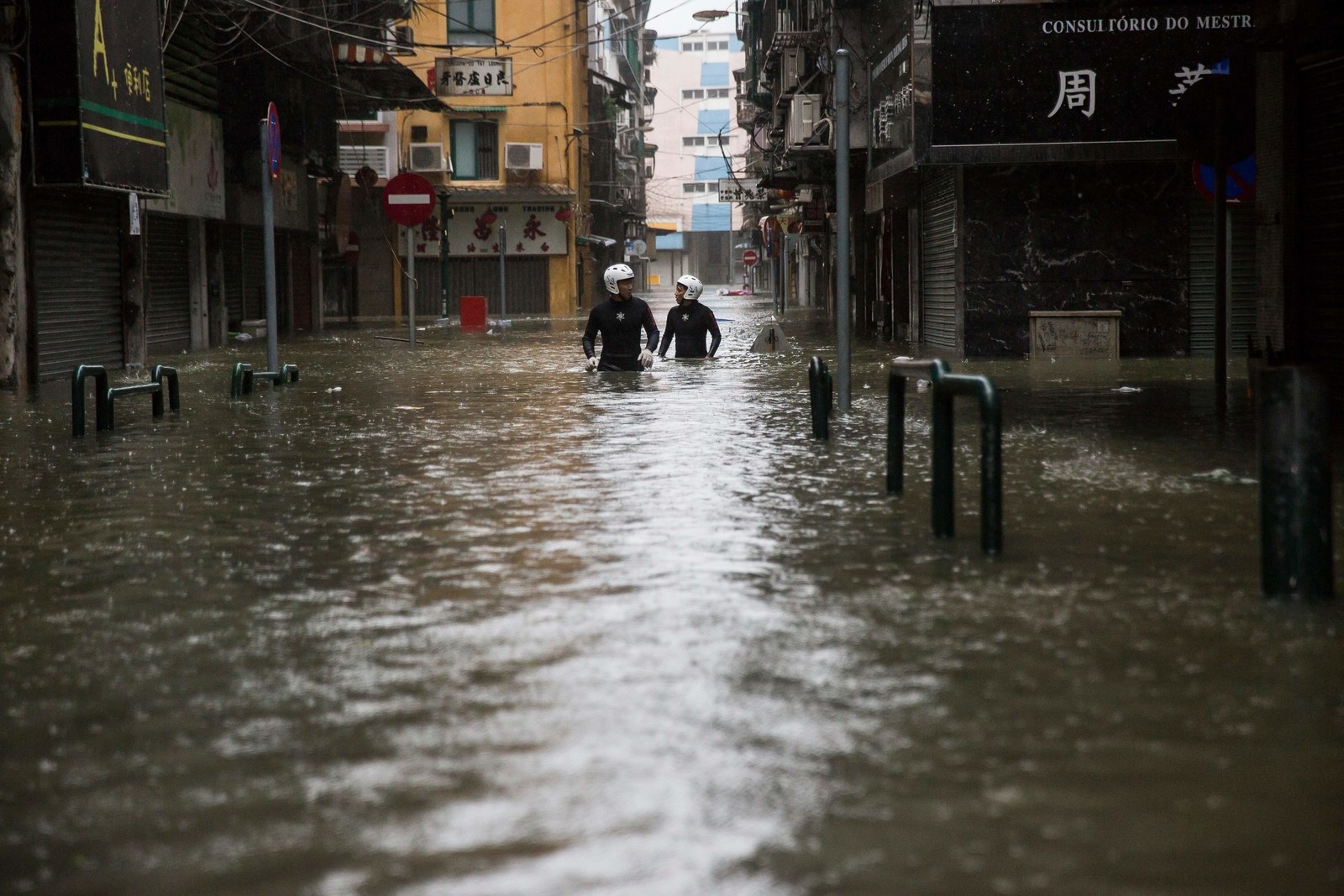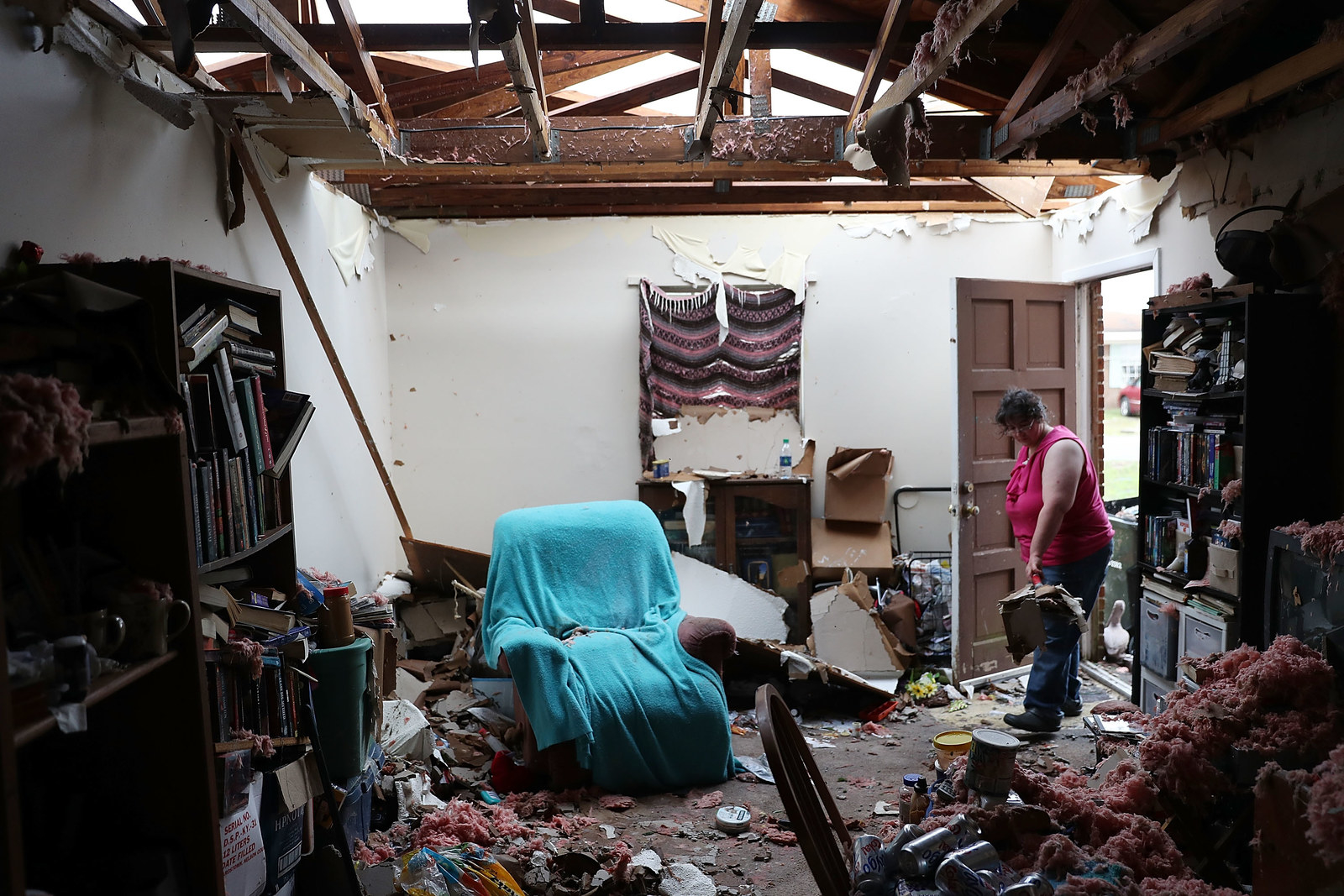This year saw a number of notable wildfires, storms, and droughts ravage many regions around the world. As the year draws to an end and w...
This year saw a number of notable wildfires, storms, and droughts ravage many regions around the world. As the year draws to an end and we look to 2019 for some relief, the National Climate Assessment, released in November and prepared across 13 federal agencies, isn't reassuring: More frequent and intense events are on the horizon as the climate continues to warm. The report warns of further loss of life, substantial economic impact, and a transformation of current ecosystems so significant that "future generations can expect to experience and interact with the natural environment in ways that are different from today." These photos illustrate this year’s most devastating natural disasters.
WILDFIRES
Drought, kindling-like dry vegetation, and strong winds intensified wildfires this year to catastrophic levels, helping them burn hotter and spread faster. As global temperatures continue to rise for the foreseeable future and communities continue to be built and expand into fire-prone areas, wildfires will persist as a menacing force with devastating consequences.
In Greece, a series of wildfires called the Attica fires spread across resort communities such as Mati, and began on July 23 during a particularly lengthy heat wave in Europe. These fires were the second-deadliest series in the 21st century with over 90 dead. Although many factors contributed to the high death toll, the prolonged hot and dry conditions coupled with winds in excess of 45 mph fed and fanned the fast-moving blaze.
California also had a particularly disastrous year that included both the most destructive (Camp fire) and the largest complex fires (Mendocino Complex fire) on record for the state. The Mendocino Complex fire torched over 400,000 acres of land in July and killed a firefighter. The Camp fire, which was first reported on Nov. 8, in Paradise, California, claimed the lives of 88 people and destroyed more than 250,000 acres. Other notable fires in California were the Woolsey fire, which began in November and burned all the way from Thousand Oaks to the coastline in Malibu, and the Carr fire in July, which claimed the lives of both firefighters and civilians.
California also had a particularly disastrous year that included both the most destructive (Camp fire) and the largest complex fires (Mendocino Complex fire) on record for the state. The Mendocino Complex fire torched over 400,000 acres of land in July and killed a firefighter. The Camp fire, which was first reported on Nov. 8, in Paradise, California, claimed the lives of 88 people and destroyed more than 250,000 acres. Other notable fires in California were the Woolsey fire, which began in November and burned all the way from Thousand Oaks to the coastline in Malibu, and the Carr fire in July, which claimed the lives of both firefighters and civilians.

Josh Edelson / AFP / Getty Images
A burned neighborhood in Paradise, California, as a result of the Camp fire, Nov. 15.

Josh Edelson / AFP / Getty Images
A home is overshadowed by towering smoke plumes as the Camp fire burns through Paradise on Nov. 8.

Angelos Tzortzinis / AFP / Getty Images
People watch a wildfire in the town of Rafina, near Athens, July 23.

Savvas Karmaniolas / AFP / Getty Images
A scorched area following a wildfire in the Greek village of Mati, July 26.

Noah Berger / AP
Firefighters monitor a backfire while battling the Ranch fire in Northern California, Aug. 7.

Josh Edelson / AFP / Getty Images
Burned-out cars from the Ranch fire, part of the Mendocino Complex fire, which hit Spring Valley in Northern California, on Aug. 7.

Ringo H.w. Chiu / AP
Tim Biglow tries to save furniture from the Woolsey fire in Malibu, Nov. 9.

Robyn Beck / AFP / Getty Images
The Woolsey fire reaches the ocean along the Pacific Coast Highway near Malibu, Nov. 9.

Justin Sullivan / Getty Images
Homes destroyed by the Carr fire, Redding, California, July 27.
DROUGHT & EXTREME HEAT
The overall rise and often extreme temperatures, coupled with little to no precipitation, led to lengthy heat waves in regions worldwide and put some cities in a drought. The Australian state of New South Wales was plunged into total despair "with close to 100% of the state in one of the three drought categories," according to the Department of Primary Industries, which monitors drought. The state's second-driest fall on record was followed by a very dry winter, leading to large-scale crop failure and dried-up dams. Grim images of skin-and-bones livestock began to emerge as farmers struggled to feed their animals and find them adequate water.
Northern and Southern European countries alike were gripped by a deadly heat wave caused in part by a stalled jet stream beginning in May. The prolonged extreme temperatures caused a widespread browning of fields and vegetation, which could be seen from space. Other effects included a number of wildfires, the melting of the southern peak of Kebnekaise in Sweden, causing it to lose its title as the highest peak in the country, and a critical reduction of the Rhine’s river levels, resulting in the death of thousands of fish.
In Afghanistan, another very dry winter has led to the worst drought in decades with millions of people in some parts of the country lacking access to food and water. The situation is so dire it rivals the ongoing conflict between the government and the Taliban. The United Nations announced the allocation of $34.5 million in emergency aid in October.
In Afghanistan, another very dry winter has led to the worst drought in decades with millions of people in some parts of the country lacking access to food and water. The situation is so dire it rivals the ongoing conflict between the government and the Taliban. The United Nations announced the allocation of $34.5 million in emergency aid in October.

Patrik Stollarz / AFP / Getty Images
The riverbed of the Rhine dried out on Aug. 8 in Düsseldorf, Germany.

Konrad K. / KONRAD K./SIPA
Dry sunflower plants in a field near Lyon, France, affected by drought during a heat wave on Aug. 20.

Brook Mitchell / Getty Images
Harry Taylor, 6, plays on the dust bowl his family farm has become during the drought on June 17 in Coonabarabran, New South Wales, Australia.

Glenn Nicholls / AFP / Getty Images
A train makes its way through dry paddocks in the drought-hit area of Quirindi in New South Wales, Australia.

Farshad Usyan / AFP / Getty Images
An Afghan girl carries empty containers to collect water as a younger child looks on in Sakhi village, Afghanistan, on July 19.

Hoshang Hashimi / AFP / Getty Images
Drought-displaced Afghan children at their tent at a camp for internally displaced people in the Injil district of Herat province in Afghanistan on Aug. 3.
HURRICANES & TYPHOONS
Hurricanes, or typhoons, as they're called for storms over the western Pacific ocean, are fueled first and foremost by warm ocean waters. As the oceans gradually heat by around 0.2 degrees per decade, we should experience larger and more frequent storms during future hurricane seasons.
Two major storms to hit the United States this year were hurricanes Florence and Michael. Both storms reached a Category 4 while over the warm ocean waters, and each caused destruction in their own way. Florence, the first major hurricane of the season, weakened before making landfall as a Category 1 on Sept. 15, but moved so slowly and dumped a devastating amount of rain (20 to 30 inches) that it caused catastrophic flooding in North Carolina and 53 deaths. Hurricane Michael, the third most intense hurricane to make landfall in the US, hit Mexico Beach, Florida, as a Category 4 on Oct. 4. Its wind speeds (up to 155 mph) caused more damage than its rainfall. At least 36 people died as a result of Michael.
Super Typhoon Mangkhut was a Category 5 as it made landfall in the northern Philippines and made its way toward South China. In anticipation of this incredibly strong storm, the Hong Kong Observatory labeled it a Signal 10 (the strongest in its range). The typhoon caused an incredible amount of damage with heavy rain, strong storm surge, wind damage with speeds of 109 mph and deadly landslides, and caused at least 88 deaths.
Super Typhoon Mangkhut was a Category 5 as it made landfall in the northern Philippines and made its way toward South China. In anticipation of this incredibly strong storm, the Hong Kong Observatory labeled it a Signal 10 (the strongest in its range). The typhoon caused an incredible amount of damage with heavy rain, strong storm surge, wind damage with speeds of 109 mph and deadly landslides, and caused at least 88 deaths.

Joe Raedle / Getty Images
Jovani Quintano and Carlos Gomez walk through a flooded neighborhood after heavy rains brought on by Hurricane Florence, Sept. 19, in Lumberton, North Carolina.

Joe Raedle / Getty Images
Floodwaters from the cresting Little River inundated the area of Spring Lake, North Carolina, during Hurricane Florence, Sept. 17.

NASA/European Space Agency (ESA) via Getty Images
Hurricane Florence churns through the Atlantic Ocean toward the East Coast on Sept. 12.

Lam Yik Fei / Getty Images
The aftermath of Typhoon Mangkhut in Hong Kong on Sept. 17.

Ted Aljibe / AFP / Getty Images
Rescuers dig at a landslide site where dozens of residents are believed to have been buried during heavy rains at the height of Typhoon Mangkhut in Itogon, Benguet province, the Philippines, on Sept. 18.

Isaac Lawrence / AFP / Getty Images
Rescue workers make their way through floodwaters during a rescue operation after Super Typhoon Mangkhut passed through Macau on Sept. 16.

Joe Raedle / Getty Images
Route 98 in Mexico Beach, Florida, was decimated after Hurricane Michael passed through the area in October.

Joe Raedle / Getty Images
Amanda Logsdon begins the process of trying to clean up her home after its roof was blown off by Hurricane Michael on Oct. 11 in Panama City.

Scott Olson / Getty Images
A man walks through Mexico Beach, Florida, Oct. 16.
"California also had a particularly disastrous year that included both the most destructive
ReplyDelete(Camp fire) and the largest complex fires (Mendocino Complex fire) on record for the state."
The evidence is strong that the major 2017 - 2018 California fires were mostly MAN MADE. Without the disastrous forest policy; smart meters and DEW weapons these fires would not have been bad at all.
“A nation of people who do not use their intelligence are no better than animals who do not use their intelligence.” Silent Weapons for Quiet Wars Note the good news is we are using our intelligence; it appears MANY people LEARNED from the 2017 North Bay Fires and disabled or rejected their "smart meters" and thus avoided losing their homes in the 2018 California Fires
"California also had a particularly disastrous year that included both the most destructive
ReplyDelete(Camp fire) and the largest complex fires (Mendocino Complex fire) on record for the state."
The evidence is strong that the major 2017 - 2018 California fires were mostly MAN MADE. Without the disastrous forest policy; smart meters and DEW weapons these fires would not have been bad at all.
“A nation of people who do not use their intelligence are no better than animals who do not use their intelligence.” Silent Weapons for Quiet Wars Note the good news is we are using our intelligence; it appears MANY people LEARNED from the 2017 North Bay Fires and disabled or rejected their "smart meters" and thus avoided losing their homes in the 2018 California Fires
http://healthyprotocols.com/2_North_Bay_Fires.htm
climate change is the new boogeyman! we only have 12 years until we are all dead! this is not enough time to reverse the FACK of climate change! so we should put our heads between our legs and kiss our asses GOODBYE!
ReplyDelete